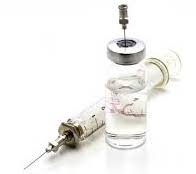
The desire to lose fat for many people is a prevalent one and the recent popularity of LipoDissolve injections offers an treatment option for some of these patients. As a result of its popularity, many patients have been treated around the world with varying experiences. Recent reports have even suggested that it is ‘dangerous’ and may have the risk of serious complications. I report here on my 18 month experience in Indianapolis with over 150 patients who have completed three treatment sessions.
First and foremost, it is important for all patients to understand that the LipoDissolve formula -a blend of a soy derivative (phosphatidylcholine) and bile salt (sodium deoxycholate) – is not FDA-approved. This does not mean it is not safe, but that it has not been rigorously evaluated in controlled studies. It is my opinion that when used judiciously, it is safe and I have seen no problems with its use in patients to date. Secondly, patient selection is the key to achieving satisfactory results. LipoDissolve is not for weight loss or major areas of body contouring. That is what liposuction surgery is for. If the fat area is about the size of your hand or a coke can, then LipoDissolve injection therapy will likely be effective. The amount of fat removed is certainly not as good as liposuction in the vast majority of cases, but positive changes can usually be seen. The only area that seems to get as good as results as liposuction surgery is in the neck, the inner aspect of the knees, and sometimes the flanks. Third, the number of LipoDissolve injections should be limited to 100 or under per each session. That means with a typical injection volume of 0.5ml at a half-strength solution, the total volume of concentrated solution is around 20 to 25ccs. That seems to be what is very tolerable for most patients and has never caused any negative reactions in my experience. Lastly, while there is no recovery as in surgery, there is a significant after-injection reaction that includes redness and sizeable swelling that lasts for about a week. With that comes some mild discomfort, the injected area will feel like jello, and small nodules or lumps under the skin will be felt for up to 8 weeks after the last injection session.
In my experience, LipoDissolve is a useful adjunct in the management of excess fat and is not dangerous. The key to a successful outcome, however, with LipoDissolve injection therapy is be seen and evaluated by a physician, preferably a plastic surgeon, experienced in its use. I do not say plastic surgeon to be self-serving but, from a practical standpoint, a plastic surgeon (who can provide liposuction as well) is not vested in the use of LipoDissolve alone. Having a broad range of treatment options available, a plastic surgeon is best able to weigh the merits of LipoDissolve vs liposuction for your particular area of fat concern.
Dr Barry Eppley
Indianapolis, Indiana


